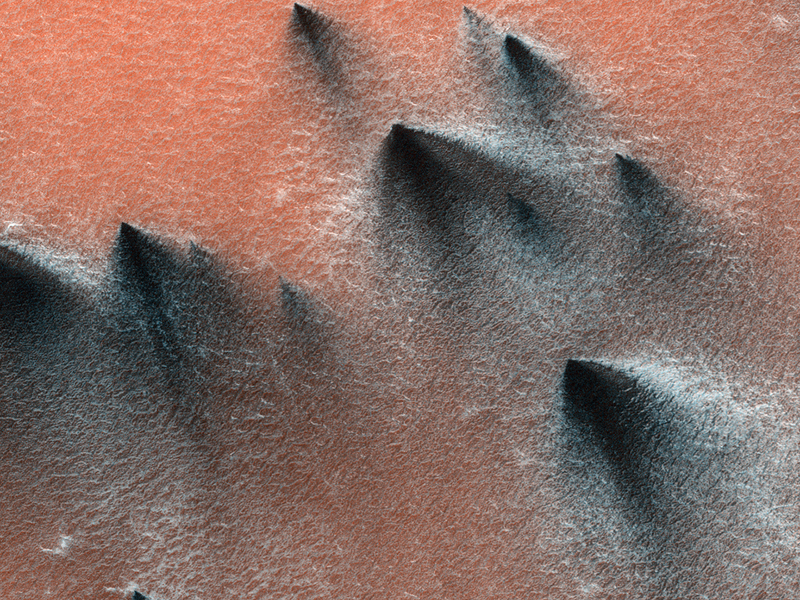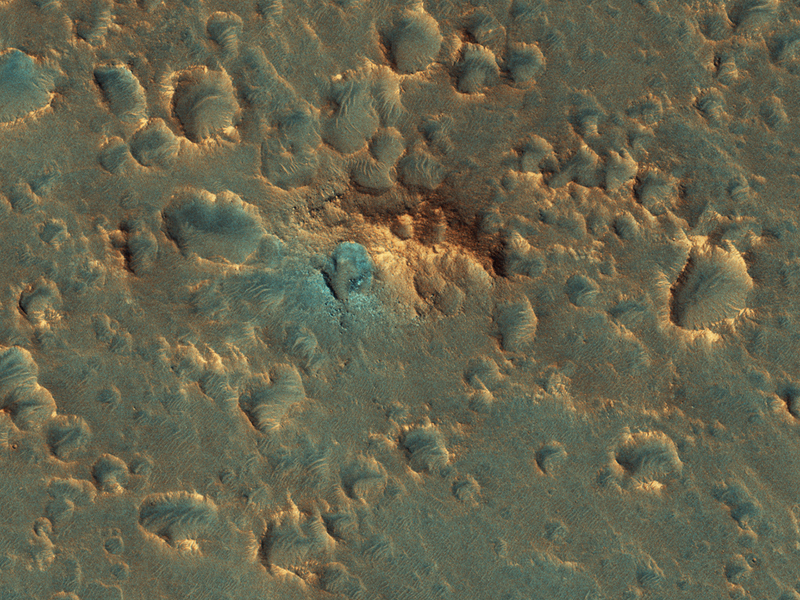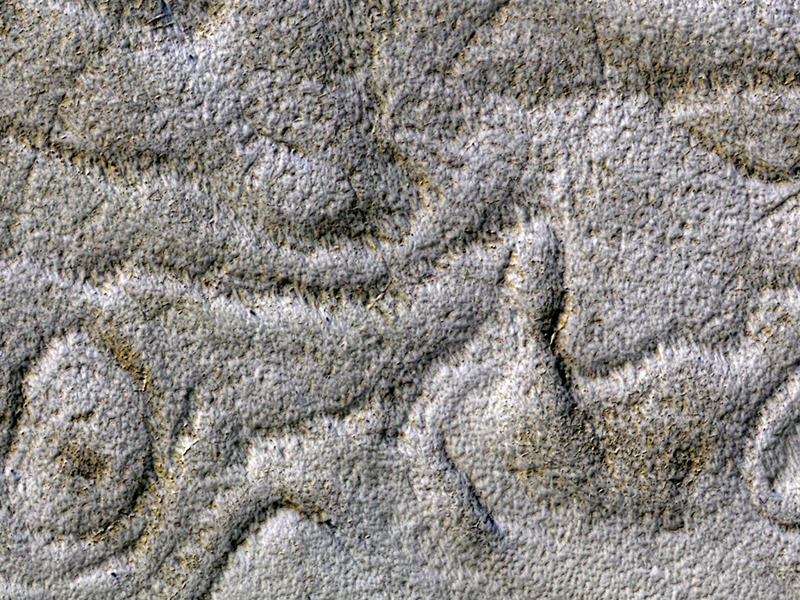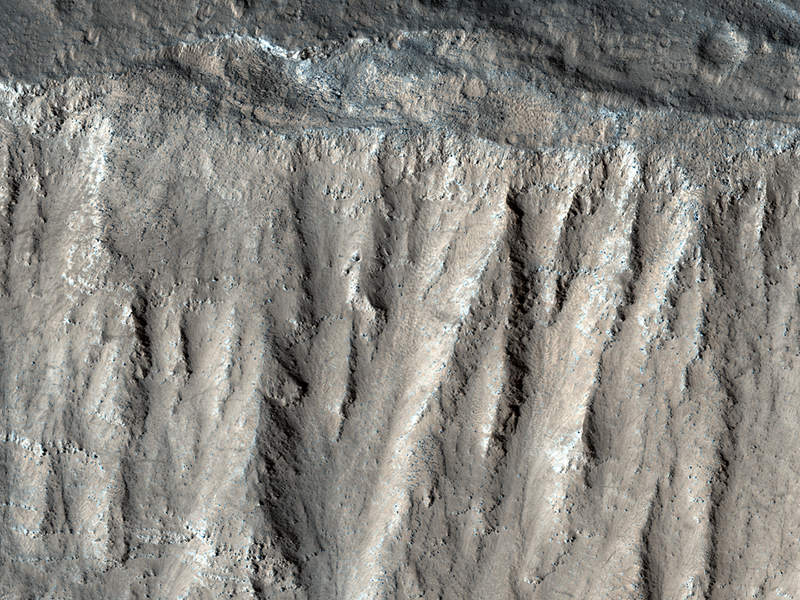HiRISE Updates Week of 2018 Oct 29
Posted: Sun Nov 04, 2018 3:34 pm
Author wrote:Geyser Season (ESP_056082_0945)
Springtime in the South Polar region of Mars is a season of exciting activity. The thick coating of carbon dioxide ice that accumulated over the winter begins to sublimate (turn to vapor) as the sun rises higher in the sky and warms the ice. Sunlight penetrates through the transparent ice, and is absorbed at the base of the ice layer. The gas that forms as a result of the warming escapes through weaknesses in the ice and erupts in the form of magnificent geysers of gas and dust.
This image captures some of this activity in a region near 85 degrees south latitude that is being monitored by HiRISE. What makes this image interesting is the changing directions of the fans left behind by the geysers, indicating that the winds blew from different directions at the time that the geysers erupted. Winds from the southwest produced the dark fans at both ends of the image, whereas northwesterly winds dominated dust deposition in between. Local topography probably played a role in altering the wind direction; this shaded relief image shows that this image traverses a trough in the South Polar layered deposits, which may have funneled winds down slope along the length of the trough.
M. Ramy El-Maarry wrote:An ExoMars Landing Site (Oxia Planum) (ESP_056916_1990)
HiRISE plays an important role in finding suitable landing sites for future rover missions. Scientists have narrowed down the candidate landing sites for the upcoming European ExoMars rover mission to two regions: the plains of Oxia and Mawrth Vallis. (This particular area is slightly north-east of the landing ellipse in Oxia Planum.)
Images covering these areas aid scientists in picking a location that will be both scientifically interesting and a safe place to land and operate. HiRISE pictures help to assess the risk for each particular location so that a final landing site can be selected.
If you look very closely, the image may appear hazy. This is due to additional dust lingering in the atmosphere from the massive summer global dust storm at the time we acquired this observation. ExoMars is due to launch to Mars in 2020.
Alfred McEwen wrote:Curving Ridges and Pits (ESP_056311_0940)
This terrain is unusual for the South Polar region of Mars, with a set of curved ridges of unknown origin.
Small pits are present, often concentrated on the ridges, that may have resulted from sublimation of ice.
Colin Dundas wrote:A Caldera’s Steep Slopes (ESP_056431_1915)
This image shows part of the steep wall of the caldera (a large volcanic crater) at the top of Ascraeus Mons, one of Mars’ giant volcanoes.
We can see chutes carved into the soft dust that has built up on the slope, with some similarities to gully landforms elsewhere on the planet.
Credit: NASA/JPL-Caltech/University of Arizona
<< Previous HiRISE Update



